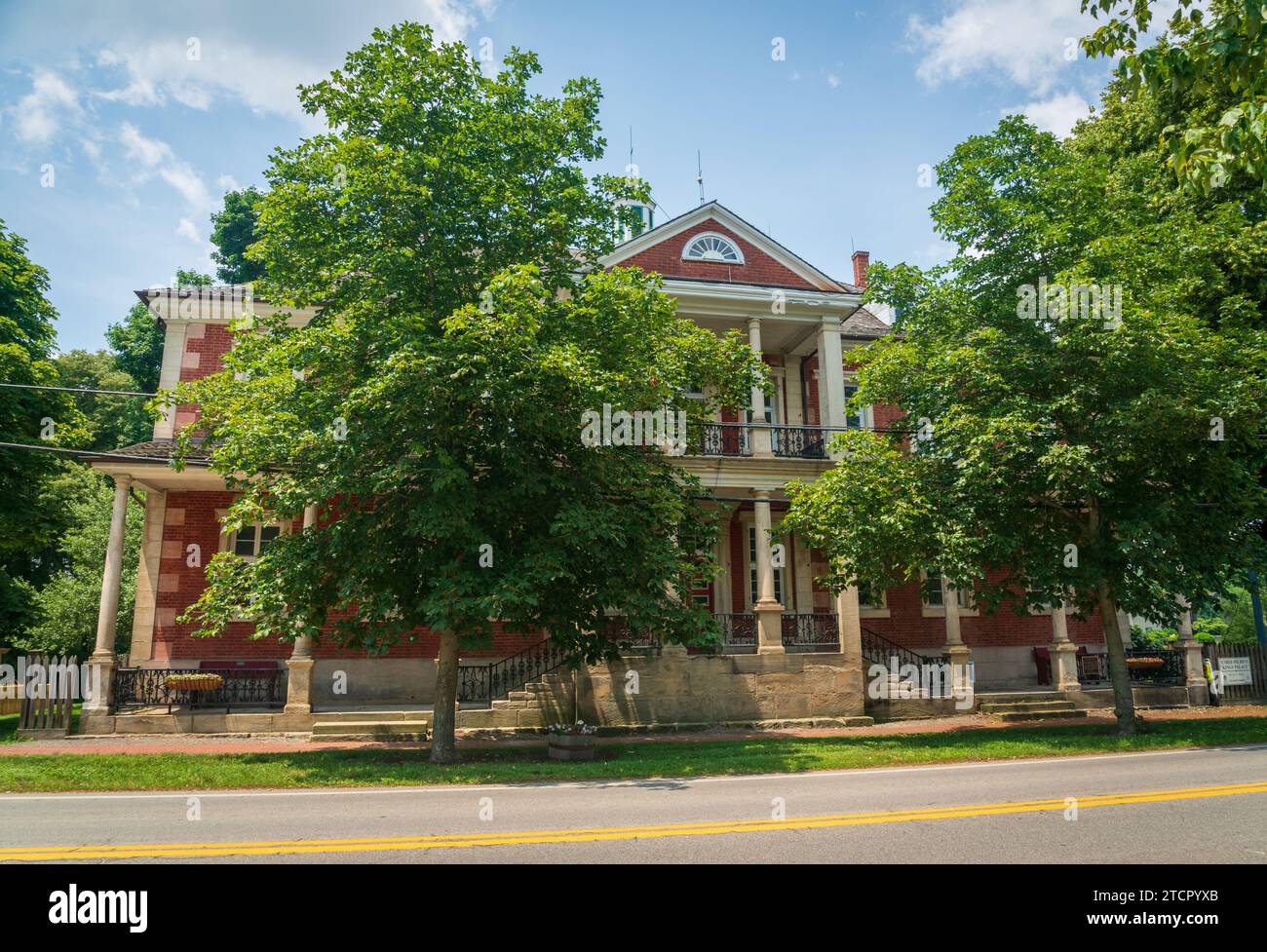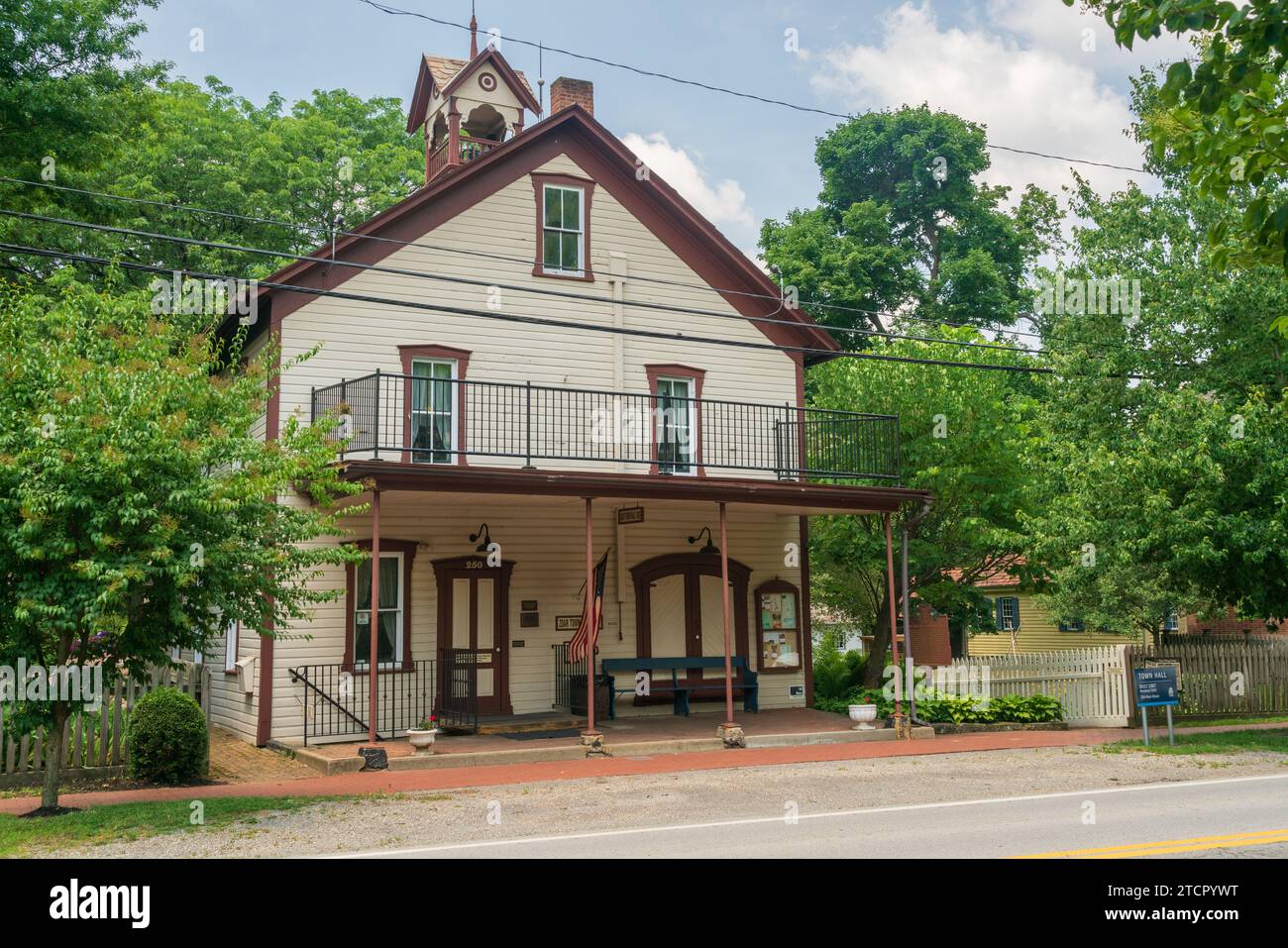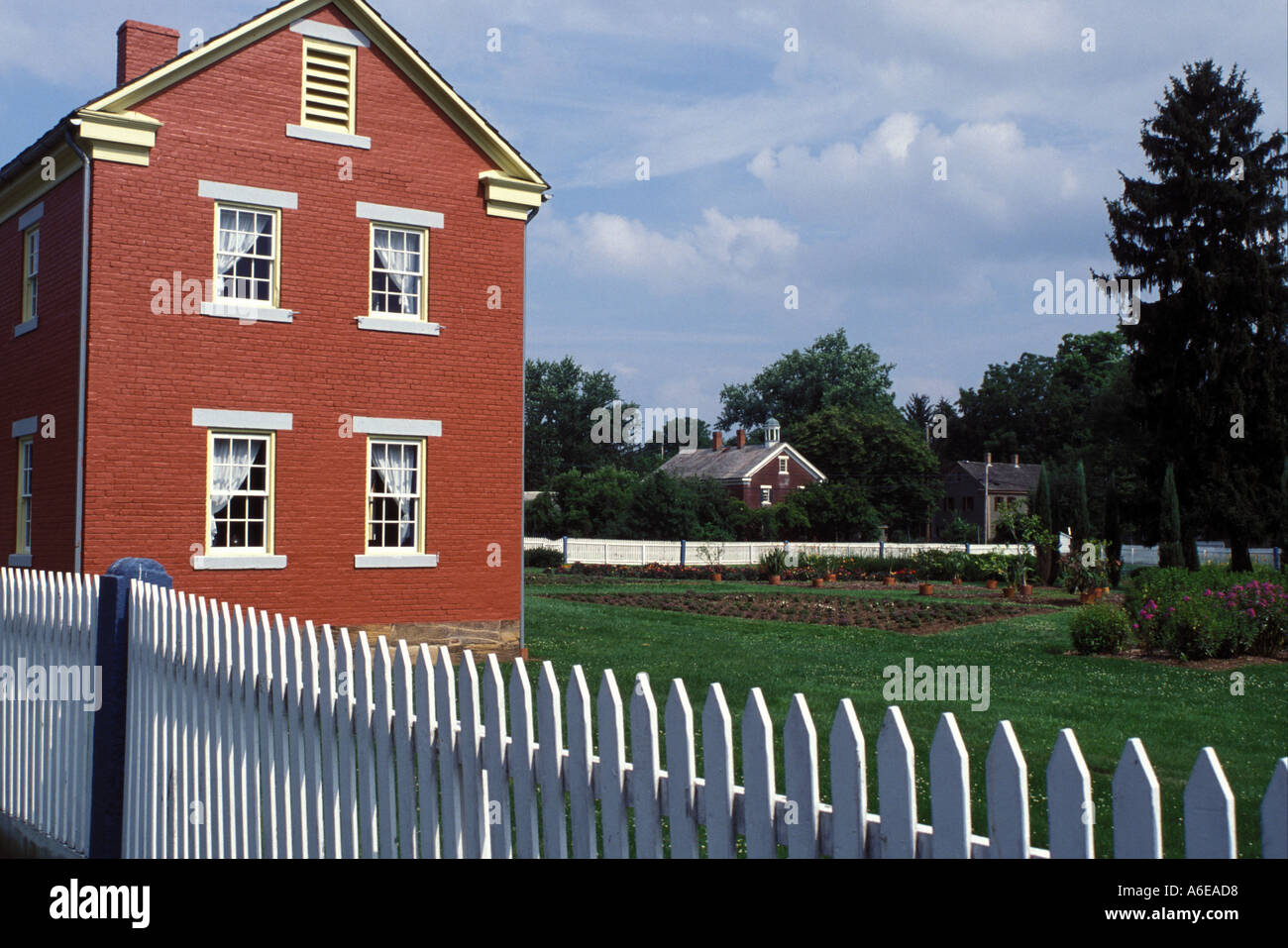
Where History Meets Mystery: Zoar, Ohio, and the Fabric of American Legends
In the quiet valley of Tuscarawas County, Ohio, lies a village frozen in time. Zoar, a meticulously preserved testament to a 19th-century German separatist community, offers visitors a glimpse into a utopian dream that once thrived on communal living and spiritual devotion. Its neat brick houses, the iconic "Garden of Zoar," and the serene landscape whisper tales of industriousness, faith, and the unique challenges of building a new society in the American wilderness. Yet, beneath this veneer of historical authenticity, Zoar, like countless other nooks and crannies across the vast American landscape, is also a fertile ground for whispers of the uncanny, a micro-tapestry woven into the larger, vibrant fabric of American legends.
America, a relatively young nation forged from diverse cultures and vast, untamed territories, is paradoxically rich in folklore. From the ancient narratives of its indigenous peoples to the tall tales of frontiersmen, the ghost stories of colonial towns, and the cryptid sightings of remote wilderness, legends are an intrinsic part of the national identity. They explain the inexplicable, immortalize heroes (and villains), caution against dangers, and imbue the mundane with a touch of the magical. Zoar, with its distinct history of isolation, communal intensity, and eventual dissolution, provides a fascinating lens through which to examine how specific circumstances breed local legends that resonate with universal human themes, echoing the broader myth-making traditions of the continent.
Zoar’s Own Whispers: Echoes of a Utopian Dream

The Society of Separatists of Zoar, founded in 1817 by German immigrants seeking religious freedom and a communal life, was an anomaly. Led by their charismatic "first among equals," Joseph Bimeler, they built a self-sufficient community that eschewed private property and embraced a strict, pious lifestyle. Their "Garden of Zoar," a meticulously planned symbolic garden representing the New Jerusalem, lay at the heart of their village, a physical manifestation of their spiritual aspirations.
For nearly a century, the Zoarites thrived, navigating floods, economic downturns, and internal dissent, until the pressures of the outside world, declining faith among younger generations, and the death of their founding leaders led to the community’s dissolution in 1898. Such a history, steeped in intense belief, communal struggle, and a poignant end, is ripe for the birth of local legends.
One popular legend among locals and visitors alike speaks of the lingering presence of the Separatists themselves. It is said that the ghosts of Zoar’s founders, particularly Joseph Bimeler, still walk the village streets. Their spectral forms are sometimes seen near the historic Number One House, where Bimeler lived, or in the serene Garden of Zoar, perhaps still tending to their spiritual creation. Visitors report inexplicable cold spots, the faint scent of pipe tobacco (Bimeler was known to smoke), or the distant sound of hymns carried on the wind. These tales are not merely spooky; they reflect a deep respect for the community’s founders and a longing for the intense faith that once permeated the village. The legends serve as a way to keep their memory, and their dream, alive, a testament to the idea that some spirits are too tied to their earthly work to fully depart.
Another local legend, perhaps more metaphorical, concerns the "hidden treasures" of Zoar. While literal gold may not be buried beneath the village, stories persist of secret caches of documents, lost heirlooms, or even coded messages left by Bimeler himself, detailing the true spiritual depth of their communal experiment. These tales speak to the inherent human desire for secrets, for a deeper understanding of the past, and for the belief that profound truths often lie just beneath the surface of the visible world. They reflect the enduring fascination with utopian societies and the mysteries that inevitably accompany their rise and fall.
From Local Lore to National Narratives: The American Myth-Making Machine
Zoar’s specific legends, born from its unique history, are microcosms of a much larger American phenomenon. The desire to explain, to memorialize, and to entertain through narrative is deeply ingrained in the American psyche. These legends often fall into distinct categories, each reflecting different facets of the nation’s experience:
-

Indigenous Legends: Long before European settlers arrived, the continent was rich with oral traditions, creation myths, trickster tales, and stories of powerful spirits and sacred places. From the Thunderbird to the Skinwalker, these legends are not merely stories but deeply spiritual and cultural touchstones, offering moral lessons and explaining the natural world. While Zoar itself doesn’t directly house these, its presence on land once inhabited by Native American tribes implicitly connects it to this ancient layer of American legendry, a reminder of the many narratives that have shaped the land.
-
Frontier and Wilderness Legends: As settlers pushed westward, confronting vast, untamed wilderness, new legends emerged to cope with the unknown and to celebrate the spirit of endurance. Paul Bunyan, the colossal lumberjack who carved out rivers and forests with his mighty axe and his blue ox, Babe, is the quintessential American tall tale. He embodies the pioneering spirit, the belief in conquering nature, and the larger-than-life figures required to tame a continent. Johnny Appleseed, the gentle eccentric who spread apple seeds across the Midwest, represents the softer side of frontier legend, one of nurturing and long-term vision. These figures are not tied to specific locations in the way Zoar’s ghosts are, but they are woven into the very landscape, shaping how Americans perceive their own history of expansion and interaction with nature.
-
Cryptids and Unexplained Creatures: Perhaps the most enduring and widely known category of American legends involves cryptids – creatures whose existence is unproven but whose stories persist with fervent belief. Bigfoot, or Sasquatch, is arguably the most famous, a hairy bipedal hominid said to roam the forests of the Pacific Northwest and beyond. Reports of sightings, footprints, and blurry photographs fuel a continuous debate, tapping into humanity’s primal fear of the unknown lurking just beyond the edge of civilization.
Ohio, too, has its share of cryptid legends. The "Ohio Grassman," a regional variant of Bigfoot, is said to inhabit the state’s more secluded woodlands, particularly in the southeastern counties. Then there’s the Mothman of Point Pleasant, West Virginia (just across the Ohio River), a winged humanoid creature whose appearance in the mid-1960s was associated with strange occurrences and the collapse of the Silver Bridge. These legends, often born from isolated sightings or unusual events, provide a framework for communities to grapple with fear, natural phenomena, or simply the thrill of the mysterious. They are modern campfire stories, passed down through generations, evolving with each retelling.
-
Ghost Stories and Haunted Places: America is replete with haunted houses, battlefields, prisons, and entire towns. From the Headless Horseman of Sleepy Hollow to the restless spirits of Gettysburg, ghost legends are a direct link to the past, reminding us of tragedies, injustices, and the lingering echoes of intense human emotion. Zoar’s spectral Separatists fit perfectly into this category, demonstrating that even utopian dreams can leave behind a poignant, spectral imprint. These stories often serve as informal historical markers, ensuring that significant events or individuals are never truly forgotten.
-
Urban Legends and Modern Myths: As the nation urbanized, legends adapted. "Urban legends" (a term popularized by folklorist Jan Harold Brunvand) are often contemporary, cautionary tales, or bizarre stories that spread rapidly through word-of-mouth, email, or social media. They range from the absurd ("alligators in the sewers") to the terrifying ("the killer in the backseat") and often reflect anxieties about modern life, technology, or societal change. While Zoar might seem too pastoral for such legends, the very act of preserving its history and sharing its stories online is a modern form of legend-keeping, ensuring its narratives continue to evolve and spread in the digital age.
The Enduring Power of Myth
What is it about these stories – whether the specific whispers of Zoar or the continent-spanning tales of Bigfoot – that gives them such enduring power? Legends serve multiple vital functions within a society:
- Explaining the Unexplained: Before scientific understanding, legends offered explanations for natural phenomena, disease, or death. Even today, they offer narratives for events that defy easy rationalization.
- Moral and Cultural Instruction: Many legends carry implicit or explicit moral lessons, reinforcing community values, warning against dangers, or celebrating virtues.
- Building Community and Identity: Sharing stories, particularly those unique to a place or group, fosters a sense of belonging and collective identity. The Zoarites, through their own internal narratives, strengthened their communal bonds.
- Preserving History and Memory: Legends act as a form of oral history, ensuring that significant people, places, and events are remembered, even if their details become embellished over time.
- Entertainment and Thrill: Simply put, legends are captivating. They offer a thrilling escape from the mundane, tapping into our innate human fascination with mystery and the extraordinary.
Zoar, Ohio, stands as a quiet sentinel in this grand narrative of American legendry. Its carefully preserved buildings and tranquil atmosphere invite contemplation, but also subtly hint at the unseen forces that shape history and memory. The ghosts of its founders, the symbolic resonance of its garden, and the weight of its communal past are not merely local curiosities; they are threads in the vast, intricate tapestry of American legends. They remind us that every place, no matter how small or seemingly ordinary, holds within its history the potential for myth, for whispers that bridge the gap between what was and what could be, ensuring that the spirit of storytelling remains eternally vibrant in the heart of America.


